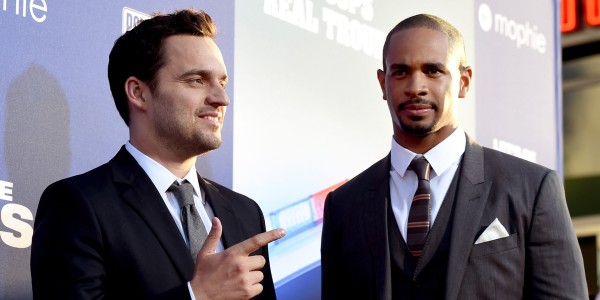While the Vienna Philharmonic led the celebration in Austria, the Berlin Philharmonic came all the way to New York for its tribute to Mozart’s 250th birthday.
Under the baton of mop-topped music director Sir Simon Rattle and with Alfred Brendel featured in the Piano Concerto No. 27 in B-flat major, the Berliners played elegantly and crisply Friday night during the third concert of their four-night run at Carnegie Hall.
Other than the all-Mozart program, which began with the Serenade in B-flat Major (“Gran Partita”) and ended with the Symphony No. 38 (“Prague”), there was nothing special done to mark the special day — not even an encore.
The concert, broadcast in the United States on radio, was part of a big weekend for Wolfie, which included a Mozart tribute program by the New York Philharmonic and the Metropolitan Opera’s internationally broadcast Saturday matinee of “Cosi fan tutte.”
Even the Disney Channel got into the spirit Friday, televising a 2005 episode of the animated children’s show “Little Einsteins” that featured Mozart’s “Eine Kleine Nachtmusik” — a work given a community “play-in” Saturday by the New Jersey Symphony at the New Jersey Performing Arts Center in Newark.
Making his second trip to New York with the Berlin Philharmonic since becoming chief conductor in September 2002, Rattle looks a bit like 1970s Roger Daltrey gone gray. He did not use a podium for the Mozart, but stood on a low one for Mahler and Strauss earlier in the week.
His Mozart was more straightforward than the Romantic repertoire during the first two concerts at Carnegie, in which he altered tempi in a manner that made familiar works unfamiliar.
Mozart was just 17 when he wrote the Serenade, supposedly to attract the attention of — and future commissions from — Emperor Joseph II. Featuring the woodwinds, the 40-minute work for 13 instruments skips along through its seven movements with great breathiness. Given the spotlight, the woodwind players shone.
Brendel, who turned 75 on Jan. 5, may be the best keyboard interpreter of Mozart (and Beethoven) now alive. There is great color and beauty focused on nearly every note, with great pacing and conception.
The three-movement symphony that followed was written in 1786, around the time Mozart was composing “Le Nozze di Figaro” (“The Marriage of Figaro”), and was given the name “Prague” by citizens of that city, who were under the likely misapprehension that he composed the work there for them. Rattle’s rendition guided along, each theme standing out with clarity.
On the previous nights, Rattle showed his propensity to play with tempi, especially Thursday in Mahler’s Fourth Symphony. The opening sleigh bells were rung seemingly at half speed, and the strings came in at double speed for their first theme.
Weird.
Still, the effect was stunning.
Mezzo-soprano Magdalena Kozena sang the closing “Das Himmlische Leben (“The Heavenly Life”) from “Des Knaben Wunderhorn” with great style. Kozena, who last year gave birth to Rattle’s son, Jonas, looked angelic in a white top and bell-shaped skirt as she slowly walked through the orchestra at the start of the final movement. But her singing was more gritty than the usual angelic chirping one hears in this work — her feet planted, Kozena rocked backward and forward, singing with lots of “body German.”
Slideshow 26 photos
Celebrity Sightings
In the opening night’s “Ein Heldenleben” (“A Hero’s Life”), Rattle brought forth a raucous sound at times, and concertmaster Guy Braunstein was superlative in his solos. Rattle left great space in some sections of Haydn’s Symphony No. 86, contrasted it with Schoenberg’s Variations for Orchestra (Op. 31) and followed the Strauss with a brisk and dynamic encore of Brahms’ Hungarian Dance No. 1.
The second program also included the New York premiere of Hanspeter Kyburz’s 2001 “Noesis.” The middle of the three movements sounded like a horror movie — when the machete-wielding psychopath walks toward the unsuspecting campers — with strong chords signaling the bloodbath to come, and the final movement was a bit like urban street sounds while stuck in traffic.
Rattle has pushed the orchestra forward from the eras of Herbert von Karajan (1954-89) and Claudio Abbado, who followed Karajan and left in 2002. Saturday night’s program included another New York premiere, Thomas Ades “Asyla,” along with Mozart’s Piano Concerto No. 9 with Emanel Ax and Ravel’s “Ma Mere.”
